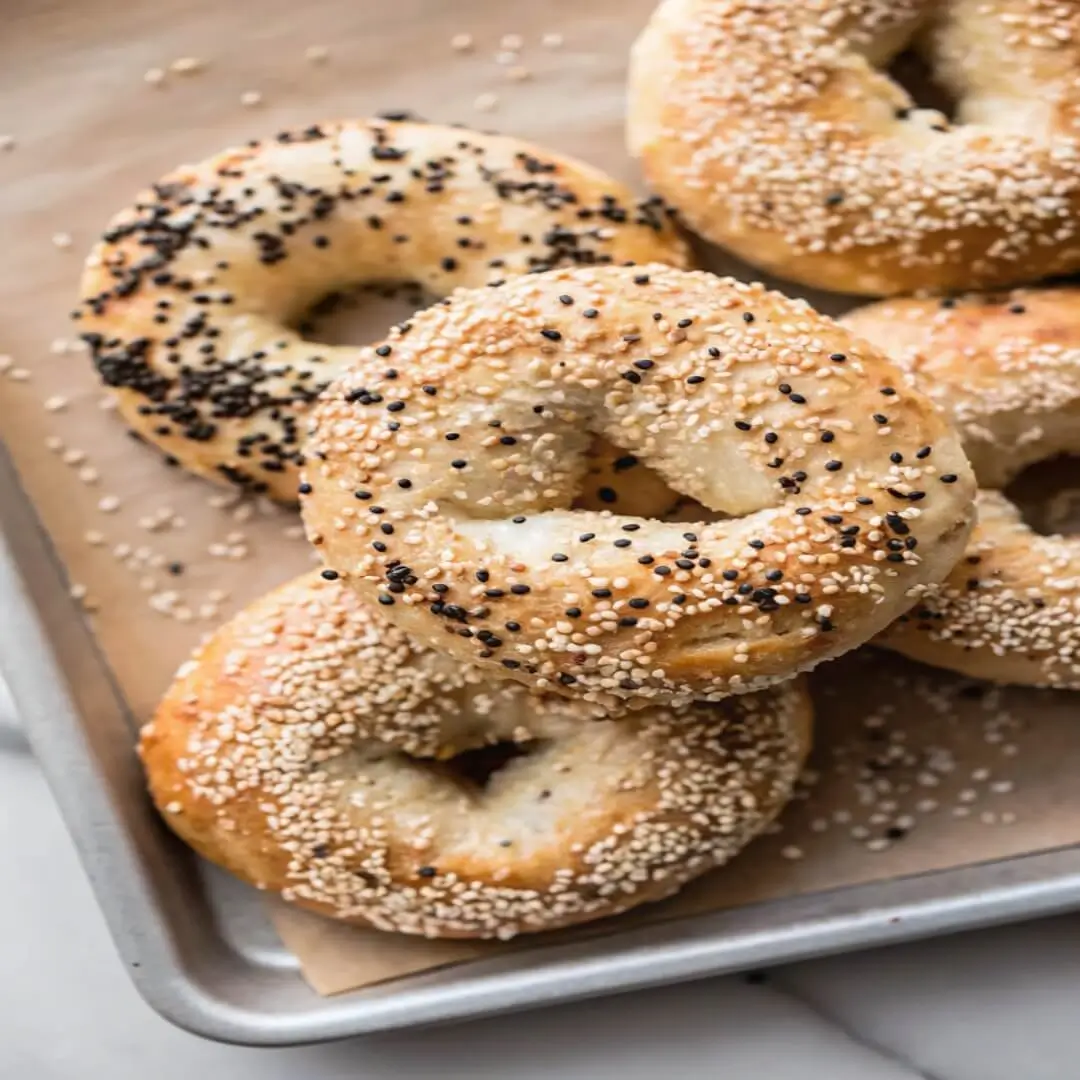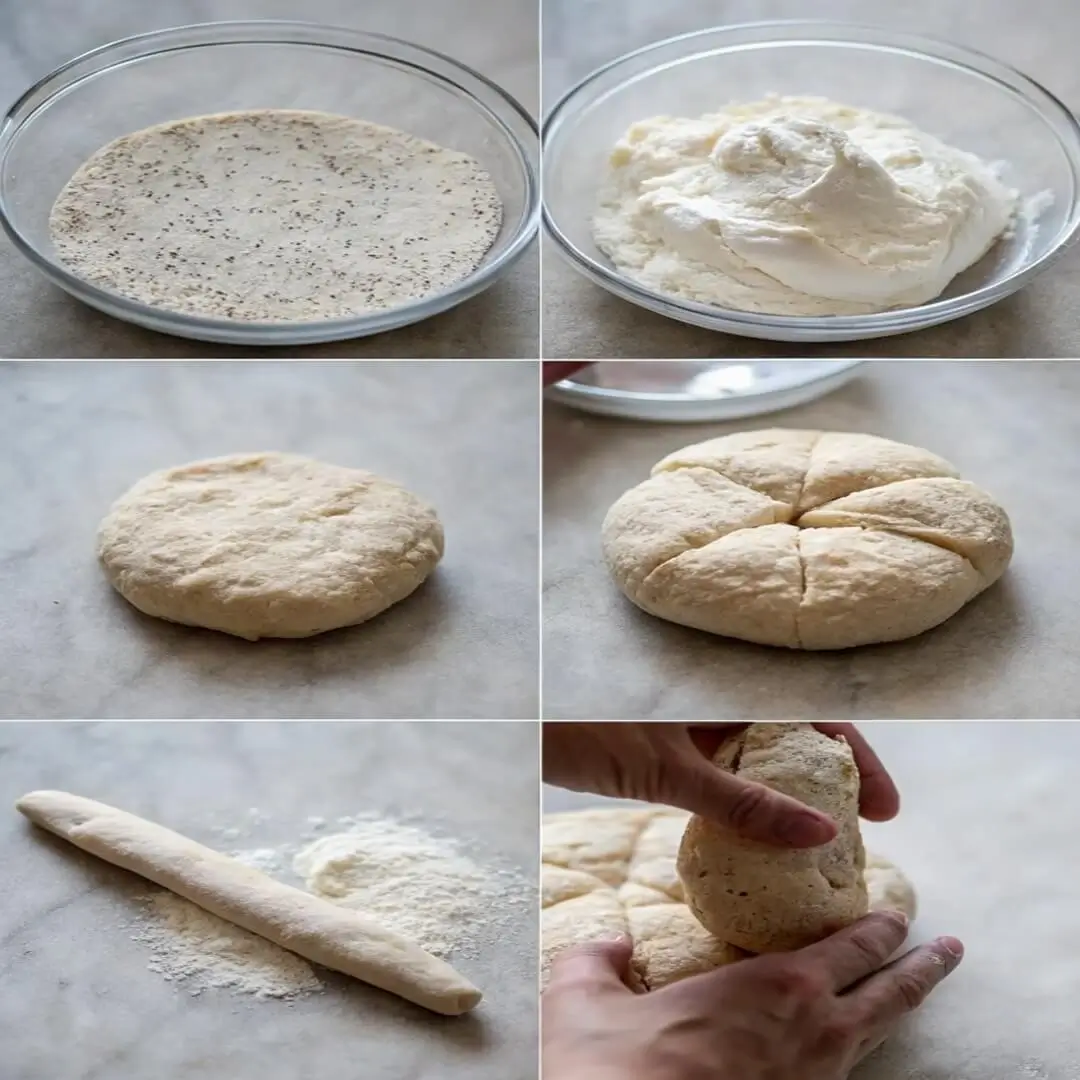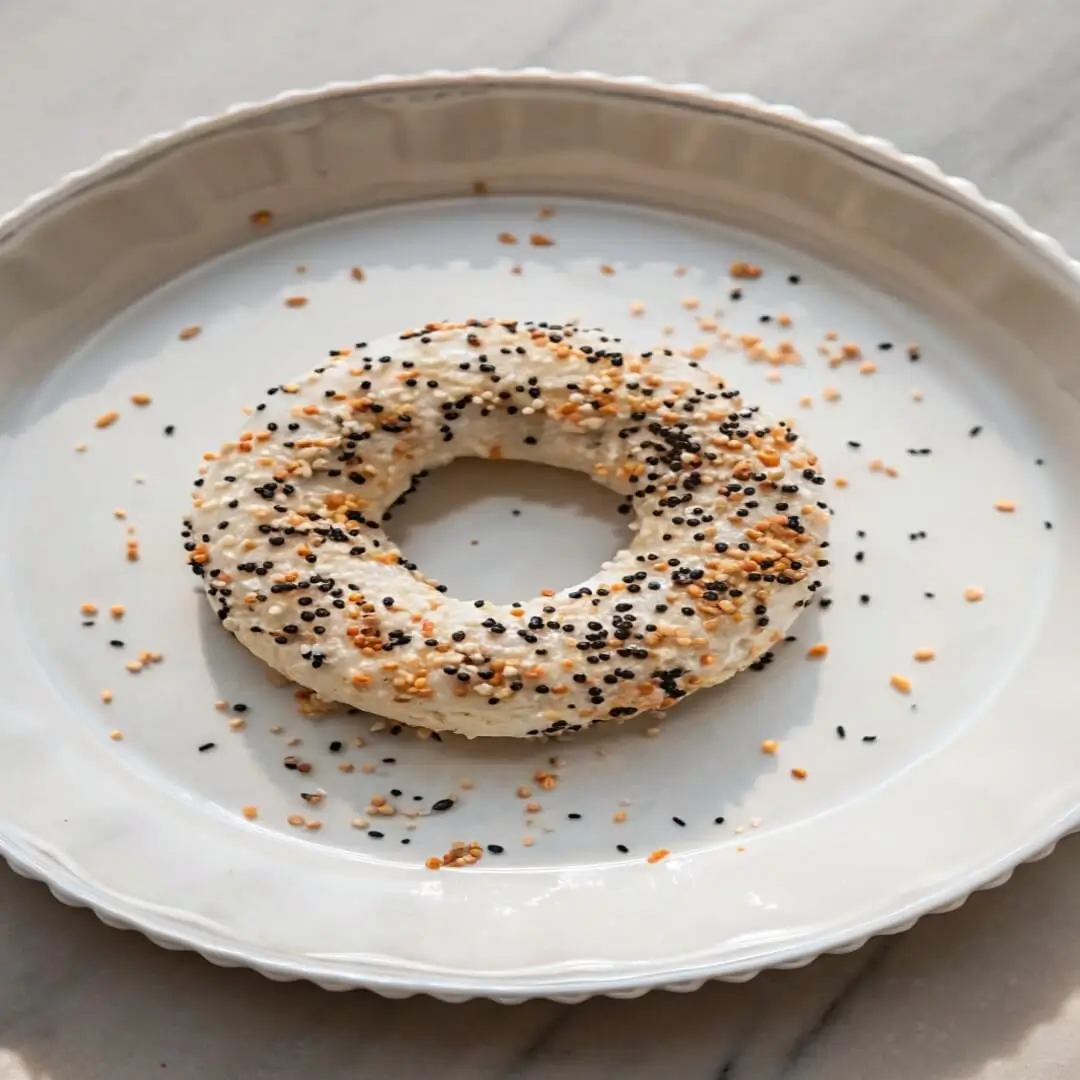Protein bagels quickly became my favorite breakfast discovery. When mornings were hectic and I needed something quick but filling, my old habit was a toasted bagel warm, chewy, familiar. But let’s be honest: by 10 a.m., I was hungry again. That’s when I stumbled across something better. These protein-packed bagels promised more than just carbs they offered real staying power.
How a Breakfast Staple Got a Makeover
My love for bagels runs deep. Back in Montreal, my grandmother made fresh bagels every Sunday. So when Jake and I moved to New York, bagels naturally became part of our weekend routine. But the traditional ones just didn’t cut it anymore. They tasted great, sure but I needed energy that lasted through meetings, errands, or even just a long walk through Central Park.
That’s when I spotted protein bagels at a local grocery store. Curious, I gave them a try. The flavor? Surprisingly close to the real thing. The texture? Dense and satisfying. And the best part they kept me full way longer.

What Are Protein Bagels Made Of?
Protein bagels might sound like a fitness food trend, but they’re actually pretty simple. Whether store-bought or homemade, they’re made with real ingredients and designed to keep you full longer. Unlike traditional bagels, which rely heavily on refined flour and sugar, protein bagels use ingredients that boost protein content without sacrificing taste or texture.
Print
Protein Bagels: A Delicious, Healthy Boost for Your Mornings
- Total Time: 45 minutes
- Yield: 6 Serving Size: 1 1x
Description
Make your own high-protein bagels at home using just 5 simple ingredients! Each bagel packs in 10 grams of protein and is made without yeast just Greek yogurt and baking powder. They’re quick to prep and perfect for easy breakfasts all week long!
Ingredients
-
2¼ cups all-purpose or bread flour
-
4 teaspoons baking powder
-
1 teaspoon kosher salt
-
1½ cups plain Greek yogurt (use full-fat or 2% for best results)
-
1 egg white, lightly whisked
-
Toppings: sesame seeds or everything bagel seasoning
Instructions
Preheat & Prep:
Start by preheating your oven to 350ºF and placing a rack in the center. Line a baking sheet with parchment paper and set it aside.
Mix the Dough:
In a large mixing bowl, stir together the flour, baking powder, and salt until combined. Add in the Greek yogurt and stir with a spoon or your hands until a dough comes together. It’ll be soft don’t overwork it.
Shape Your Bagels:
Transfer the dough to a clean surface and divide it into 6 equal portions. If things get sticky, dust your hands and the surface with a little flour. Roll each piece into a rope about 7–8 inches long, then connect the ends to form a circle. Gently roll the seam under your palm to seal. Arrange the shaped bagels on the prepared baking sheet and let them rest for 5–10 minutes so they can puff slightly.
Add Toppings:
Place a bagel on a plate and brush the top with the egg white. Sprinkle on sesame seeds or everything seasoning your choice! Return to the baking sheet and repeat with the rest.
Bake to Golden:
Bake the bagels for 20–25 minutes, or until they’re golden brown and firm to the touch. Transfer them to a wire rack to cool for at least 10 minutes before slicing. Enjoy them warm, toasted, or with your favorite spread. Leftovers? Store them in an airtight container for up to 4 days.
Notes
Use Self-Rising Flour:
If you usually keep self-rising (or self-raising) flour on hand, feel free to use it! Just swap out the all-purpose flour, baking powder, and most of the salt with 2¼ cups of self-rising flour. You’ll still need to add ¼ teaspoon of salt for balance.
Seasoning Options:
You can mix things up with different seasonings dehydrated garlic or onion work great! If you’re using everything bagel seasoning that already contains salt, reduce the added salt to ¾ teaspoon to avoid over-seasoning.
Air Fryer Method:
Preheat your air fryer to 300ºF (150ºC) for at least 5 minutes. Add the bagels and cook for 15–20 minutes, or until the tops are golden and they’re fully cooked inside.
Try a Twist:
Want a fun variation? Try Jalapeño Cheddar Bagels same easy method, just with a spicy, cheesy kick!
- Prep Time: 15 minutes
- Cook Time: 20 minutes
Nutrition
- Calories: 206
- Fat: 2g
- Carbohydrates: 35g
- Fiber: 2g
- Protein: 10g
Keywords: Greek yogurt, everything bagel seasoning, egg white, bread
Ingredients You’ll Need for Homemade Protein Bagels

-
2¼ cups all-purpose or bread flour
-
4 teaspoons baking powder
-
1 teaspoon kosher salt
-
1½ cups plain Greek yogurt (use full-fat or 2% for best results)
-
1 egg white, lightly whisked
-
Toppings: sesame seeds or everything bagel seasoning
Step-by-Step Instructions
Preheat & Prep:
Start by preheating your oven to 350ºF and placing a rack in the center. Line a baking sheet with parchment paper and set it aside.
Mix the Dough:
In a large mixing bowl, stir together the flour, baking powder, and salt until combined. Add in the Greek yogurt and stir with a spoon or your hands until a dough comes together. It’ll be soft don’t overwork it.
Shape Your Bagels:
Transfer the dough to a clean surface and divide it into 6 equal portions. If things get sticky, dust your hands and the surface with a little flour. Roll each piece into a rope about 7–8 inches long, then connect the ends to form a circle. Gently roll the seam under your palm to seal. Arrange the shaped bagels on the prepared baking sheet and let them rest for 5–10 minutes so they can puff slightly.
Add Toppings:
Place a bagel on a plate and brush the top with the egg white. Sprinkle on sesame seeds or everything seasoning your choice! Return to the baking sheet and repeat with the rest.
Bake to Golden:
Bake the bagels for 20–25 minutes, or until they’re golden brown and firm to the touch. Transfer them to a wire rack to cool for at least 10 minutes before slicing. Enjoy them warm, toasted, or with your favorite spread. Leftovers? Store them in an airtight container for up to 4 days.
Store-Bought vs. Homemade Protein Bagels
There’s a growing list of protein bagel brands out there, from Dave’s Killer Bread to Western Bagel and even Warburtons in the UK. Store-bought options usually have between 12–20 grams of protein per bagel, depending on the brand.
But don’t overlook homemade versions they’re cheaper, customizable, and surprisingly quick. Our favorite two-ingredient protein bagels bake in just 20 minutes and freeze beautifully. You can top them with seeds, cinnamon, or even everything seasoning for variety.
Whether you grab them off a shelf or bake them yourself, protein bagels give you flexibility and flavor. In the next section, we’ll dig into how healthy they really are and whether they live up to the hype.
Are Protein Bagels Actually Healthy?

Let’s talk about what everyone’s really wondering are protein bagels actually healthy, or just another buzzword-filled product? The truth is, they can be a genuinely nutritious option, especially when compared to traditional bagels. It all comes down to what’s inside and how they fit into your daily routine.
Breaking Down the Macros
One of the standout benefits of protein bagels is, well, the protein. Most store-bought options offer 12 to 20 grams of protein per bagel roughly double or even triple what you’d get from a standard bagel. Homemade ones made with Greek yogurt and self-rising flour tend to hover around 15 to 17 grams per serving.
That protein helps keep you satisfied longer and supports muscle recovery especially important if you’re active. But it’s not just about the protein. Many recipes also have fewer refined carbs, more fiber, and less sugar than traditional bagels, making them a better choice for balanced blood sugar and steady energy.
Here’s a quick comparison:
Nutritional Comparison of Bagel Types
| Bagel Type | Protein (g) | Carbs (g) |
|---|---|---|
| Traditional Plain Bagel | 7–9 | 50–60 |
| Protein Bagel (Store-Bought) | 12–20 | 25–35 |
| 2-Ingredient Protein Bagel | 15–17 | 22–30 |
Comparing Protein Bagels to Classic Bagels
When you compare the numbers, the advantage is clear. Protein bagels offer a better balance of macronutrients, which helps you avoid the post-bagel slump. They’re not “low-carb,” but they are lower in carbs and higher in protein than typical options, making them perfect for people watching their intake or trying to add more protein to their day.
Plus, many protein bagels are made with fewer additives and more whole ingredients. You can even find high-protein recipes on SwirlRecipes that use cottage cheese, oats, and seeds to push the nutritional value even further proving that these bagels are anything but empty calories.
Conclusion: Why Protein Bagels Deserve a Spot in Your Kitchen
Protein bagels are more than just a food trend they’re a simple, satisfying way to start your day with balance. Whether you make your own with just two ingredients or pick up a store-bought version, you’re giving your body fuel that lasts. They fit easily into any morning routine, whether you’re rushing out the door or sitting down for a slow breakfast.
For us, protein bagels brought comfort and nourishment together in one bite. They helped us cut out the crash-and-burn cycle of carb-heavy breakfasts without losing the joy of a fresh, warm bagel. And that’s exactly what we hope you find too a way to feel full, energized, and excited about breakfast again.
So go ahead try making your own batch or keep a pack in the freezer. However you enjoy them, protein bagels are one of those little changes that can make a big difference.
If you want more daily recipes follow me in my facebook page.
Frequently Asked Questions About Protein Bagels
Are protein bagels healthy?
Yes, protein bagels can be a healthy option—especially when made with ingredients like Greek yogurt, almond flour, or protein powder. Compared to traditional bagels, they’re usually higher in protein and lower in refined carbs. This combination supports better satiety, balanced blood sugar, and sustained energy. However, it’s still important to check the nutrition label or recipe if you’re buying or making them, as some versions may contain additives or excess sodium.
What bagels are high in protein?
Several store-bought bagels are designed to be high in protein. Brands like Dave’s Killer Bread, Western Bagel’s “Perfect 10,” and Warburtons Protein Bagels typically contain between 12 and 20 grams of protein per serving. Homemade protein bagels—especially the 2-ingredient kind made with Greek yogurt—can also offer 15–17 grams of protein each, depending on your recipe. Look for options made with whole grains, added seeds, or whey protein isolate for a higher protein boost.
How much protein is in a Warburtons bagel?
Warburtons Protein Bagels contain approximately 19 grams of protein per bagel. They’re specifically crafted with added wheat protein and fiber, making them a good choice for a filling breakfast or pre-workout snack. Compared to regular bagels, which average around 7–9 grams of protein, Warburtons offers a more balanced macronutrient profile.
How much protein is in 2-ingredient bagels?
Two-ingredient protein bagels made from Greek yogurt and self-rising flour typically contain around 15 to 17 grams of protein each, depending on the portion size and the type of yogurt used. If you use full-fat Greek yogurt, you’ll get a higher protein count and richer flavor. For an extra boost, some people mix in a scoop of protein powder—this can increase protein content by 5 to 10 grams more per serving.
